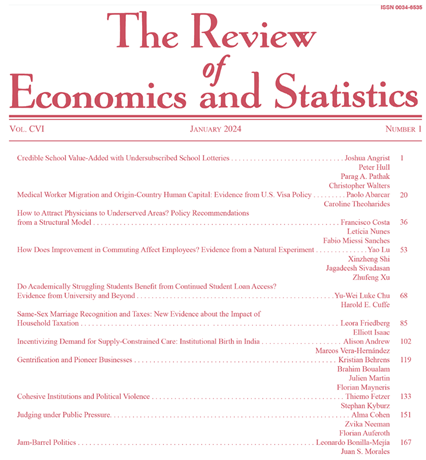Using the Sectoral Structure of the Economy to Select Competing Regions (on the Example of the Amur Region)
IF 6.8
1区 经济学
Q1 ECONOMICS
引用次数: 0
Abstract
One of the stages of the statistical study of the competitiveness of a region is the selection of competing regions.Purpose of the study. The purpose of the article is to form a statistical set of regions-competitors based on the sectoral structure of the economy.Materials and methods. As research methods in this article, the method of the main array, factorial, cluster methods, statistical methods are chosen. The statistical data of Rosstat were used for the study. To perform the calculations, the GVA was considered in the structure of Russian National Classifier of Types of Economic Activity2 for 2019. Results. With the help of factor analysis, 19 types of economic activity of the regions were grouped according to similarities and differences. As a result, six factors were formed, each of which collected dependent types of economic activity. The use of cluster analysis made it possible to form groups of regions with a similar sectoral structure of the economy. The study involved 85 regions of the Russian Federation. Cluster analysis made it possible to solve the methodological problem of determining the boundaries of GVA intervals for certain types of economic activity in the selection of competing regions.The paper shows that for the Amur Region, nine regions of the Russian Federation should be considered as competing regions. The regions of this cluster are united by a high share of gross value added by the types of activity “Transportation and storage”, “Public administration”, “Trade”. At the same time, competitors are regions from different federal districts: 70% of the regions of the Far Eastern Federal District, 20% of the Southern Federal District, 10% of the Siberian Federal District. The main results of the study are the following: 1) a high variation of the regions of the Russian Federation in 2019 was revealed by the type of economic activity “Mining” and “Manufacturing”; 2) a grouping of 19 types of economic activity of the regions was carried out using the factor analysis method; 3) a cluster analysis of the regions of the Russian Federation was carried out according to the sectoral structure of gross value added for 2019; five clusters were received. Conclusion. This paper shows that the selection of competing regions must be carried out using the sectoral structure of the region’s economy. Consideration of the region’ specialization is an important requirement of the selection methodology. The advantage of the author’s methodology is its universality, objectivity and reflection of the specialization of the region. As a direction for further research, one should consider determining the specialization of regions using localization coefficients and, on its basis, the formation of a statistical set of competing regions. The presented sample of regions is necessary for assessing their competitiveness.利用经济部门结构选择竞争区域(以黑龙江地区为例)
区域竞争力统计研究的一个阶段是竞争区域的选择。研究目的:本文的目的是在经济部门结构的基础上形成一个地区竞争者的统计集。材料和方法。本文的研究方法选择了主数组法、析因法、聚类法、统计方法等。本研究采用Rosstat的统计资料。为了进行计算,GVA被考虑在2019年俄罗斯国家经济活动类型分类器2的结构中。结果。在因子分析的基础上,对各区域的19种经济活动进行了相似性和差异性分组。结果,形成了六个因素,每个因素都收集了依赖的经济活动类型。利用聚类分析可以形成具有类似经济部门结构的区域组。这项研究涉及俄罗斯联邦的85个地区。聚类分析可以解决在选择竞争区域时确定某些类型的经济活动的GVA区间边界的方法学问题。本文认为,对于阿穆尔河地区,俄罗斯联邦的九个地区应被视为竞争地区。这一集群的区域由“运输和储存”、“公共行政”、“贸易”等活动类型所增加的总增加值的高份额联系在一起。与此同时,竞争对手是来自不同联邦区的地区:70%的远东联邦区,20%的南部联邦区,10%的西伯利亚联邦区。研究的主要结果如下:1)2019年俄罗斯联邦各地区的经济活动类型“采矿”和“制造业”差异很大;2)采用因子分析法对19种区域经济活动进行了分组;3)根据2019年俄罗斯联邦地区总增加值的行业结构进行了聚类分析;共收到五组。结论。本文认为,竞争区域的选择必须利用区域经济的产业结构来进行。考虑区域的专业化是选择方法的一个重要要求。笔者的研究方法的优势在于其普遍性、客观性和对区域专业化的反映。作为进一步研究的方向,应该考虑使用局部化系数来确定区域的专业化,并在此基础上形成竞争区域的统计集。所提供的地区样本对于评估其竞争力是必要的。
本文章由计算机程序翻译,如有差异,请以英文原文为准。
求助全文
约1分钟内获得全文
求助全文
来源期刊

Review of Economics and Statistics
Multiple-
CiteScore
8.50
自引率
0.00%
发文量
175
期刊介绍:
The Review of Economics and Statistics is a 100-year-old general journal of applied (especially quantitative) economics. Edited at the Harvard Kennedy School, the Review has published some of the most important articles in empirical economics.
 求助内容:
求助内容: 应助结果提醒方式:
应助结果提醒方式:


